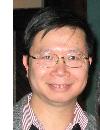
This will count as one of your downloads.
You will have access to both the presentation and article (if available).
This will count as one of your downloads.
You will have access to both the presentation and article (if available).
This course provides attendees with a basic working knowledge of modeling advanced exposure tools, with an emphasis on the optical chains. The course concentrates on the physics and working principles, as well as methodologies to analyze and model the whole optical chain of the exposure system (from illumination source to wafer space) using OPC software. This helps to bridge the communication between exposure tool engineers, lithography process engineers and OPC/RET/SMO engineers to improve lithography process in an integrated sense. You will become fluent with how one designs, analyzes, and models exposure systems for advanced ultrahigh NA immersion and dry lithography and advanced illumination, across a range of modern-day lithography practices.
This course provides attendees with a definition and underling concepts of Computational Lithography, which is comprised of lithographic modeling and advanced pattern correction techniques. It is designed to bridge the communication of exposure tool engineers, lithography process engineers, metrology engineers and OPC/RET/SMO engineers to improve lithography process in an integrated sense. You will become familiar with the Computational Lithography framework and understand how the evolution of simple models and advanced pattern correction techniques to nowadays’ complicated yet powerful tools. An understanding of the fundamentals will allow lithographers to achieve optimum mask pattern for more robust lithography. This course will focus on both the imaging modeling and pattern correction methodology for novel patterning techniques such as Extreme UV (EUV), Directed Self-Assembly (DSA) and self-aligned multiple patterning. The unique computational features (Rigorous simulation, Mask decomposition, OPC, SMO, stochastic effect mitigation) of these novel techniques will be contrasted with traditional DUV lithography. A review of the emergence of Machine Learning based computational Lithography techniques targeted to improve efficiency for full-chip application will be given. The course concentrates on the physics and working principles, as well as methodologies, to develop the new computational infrastructure. Some basic issues in Design Technology Co-Optimization with respect to EUV, DSA etc. are also discussed.
This course provides attendees with a definition and basic working knowledge of Computational Lithography, which is comprised of lithographic modeling and advanced pattern correction techniques. It is designed to bridge the communication of exposure tool engineers, lithography process engineers and OPC/RET/SMO engineers to improve lithography process in an integrated sense. You will become familiar with the Computational Lithography framework and fluent with how one develop models for advanced pattern correction techniques and apply them to achieve optimum mask pattern for more robust lithography.
The modeling portion of the course covers the modeling of entire optical chain with wavelengths from DUV to EUV, and includes novel patterning techniques such as Directed Self Assembly (DSA). The advanced patterning portion of the course includes techniques such as OPC, SMO, Large Scale Source Optimization, and mask decomposition methodology. The course concentrates on the physics and working principles, as well as methodologies, to analyze and model the entire optical chain from illumination source to wafer space using OPC software. Fundamental principles of Advanced Pattern Correction methods are described and compared. Some basic issues in Design Technology Co-Optimization are discussed.
Optical imaging in microlithography involves the physical formation of sub-micron structures within a photosensitive material for subsequent transfer into underlying films or substrates. Since the optical exposure systems used in lithography are some of the most advanced and complex optical instruments ever built, they involve ever more complex illuminator designs, nearly aberration free lenses, and hyper numerical apertures approaching unity and beyond.
Fortunately, the lithography community has risen to the challenge by devising many inventive methods to characterize and optimize exposure systems. Moreover, the advanced use of simulation not only ties together characterization data to form a cohesive picture of exposure system capability, but it allows for a shorter time to development if the appropriate model calibration is successfully used. The imaging theory and models that are subsequently used in this industry, either in commercial or in-house simulation packages, have successively evolved in complexity with each new generation of the optics, but can seem very complicated to the uninitiated.
This course will cover and explain the fundamentals behind imaging and optics in state-of-the-art microlithography. The basic optical concepts will be explained, including hyper-NA, polarization, and immersion optics. A systematic, step-by-step construction of partial coherent imaging models will be developed for vector and scalar assumptions. The description is enhanced by simple application examples to allow these models to be easily understood. Additional techniques are described that reduce the complexity of these models to allow for the formation of exposure tool performance prediction.
View contact details
No SPIE Account? Create one

